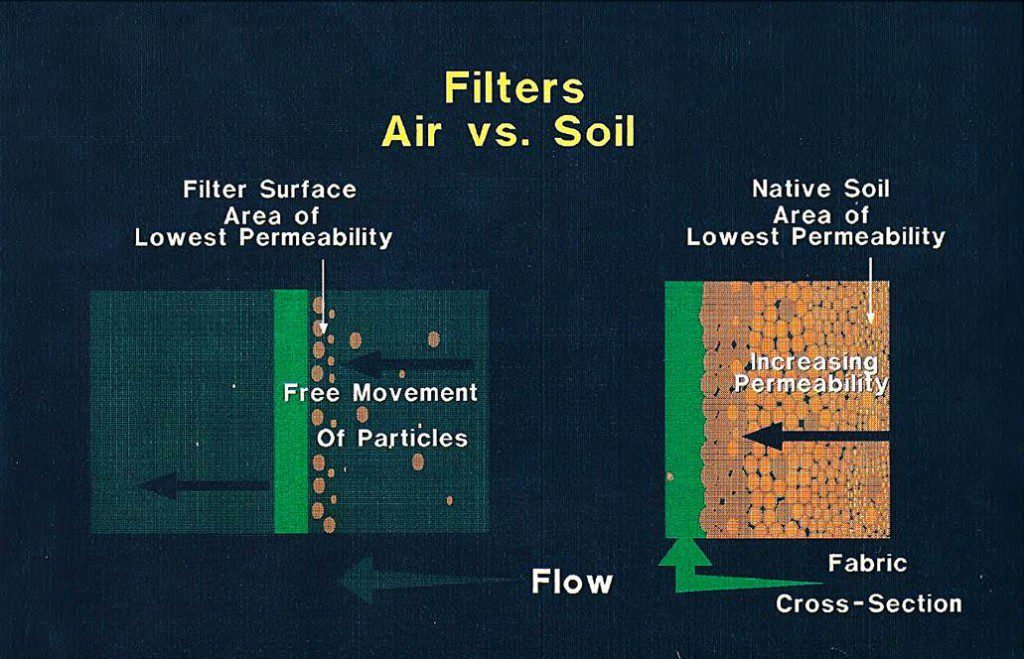One of the most commonly asked questions we receive is, “Isn’t the filter fabric (geotextile used around Turf Drain and Perma Basins) going to clog up?” In the early 80’s, when we first introduced Turf Drain to the golf course industry, I called on golf course architect, Joe Finger in Houston. Joe was a civil engineer. As soon as I showed him the Turf Drain and explained how it worked, he said, “I have never seen a filter yet that didn’t clog up and have to be replaced.” I wasn’t able to counter his statement, but as soon as I left his office, I started my search for the explanation. Since that time, I have spent untold man-hours trying to learn more about how geotextiles are used in soils, but the answer to Joe’s question is actually very simple and short.
“I have never seen a filter yet that didn’t clog up and have to be replaced.”
Filters, such as those used in swimming pools or air conditioners, have one thing in common. They are removing contaminants that are moving in the media (water or air) that is being filtered. The contaminants are of varying sizes and pass through openings in the filter. Let’s look at an example of how this would work. If the size of the particles varied on a scale from 1 to 10, and the opening size in the filter was 5, the particles smaller than 5 would initially pass through the filter, and the particles larger than 5 would be trapped on the filter. Once the particles larger than 5 formed a layer on the filter, the smaller opening would be created that would trap the particles of all sizes, even the smallest (size 1). Eventually, the layer that accumulates along the filter would have such a narrow opening that the air or water that was being filtered would start to have trouble passing through the filter. At this point, the filter would need to be replaced. One might ask then, “If this is the case, why doesn’t this happen when geotextiles are used in the soil?” Everything we do in seepage drainage is designed to create a “stable system.” This means the water moves without contaminants moving in the water stream. This is why the USGA adopted the Terzaghi formula when they rewrote the specifications for greens construction in the 90’s. This is why you send a sample of your greens mix along with a sample of the gravel that you want to use for your gravel blanket. You want to be sure that the particles will “bridge,” which means that the construction layers will be stable. In this manner, the water moves from the greens mix through the gravel without carrying particles of the greens mix into the stream. If the system is stable, the contaminants never collect along the surface of a geotextile, as they would in the filter applications we looked at above.

